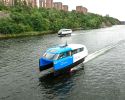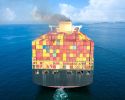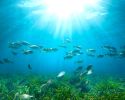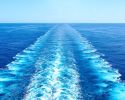2021 - the year when it became serious

A container crisis and a ship that blocked the Suez Canal highlighted the importance of shipping to the world and how vulnerable the system is that feeds us. But most important, at least for maritime research, was a tough climate package from the EU and an alarming report from the UN Climate Panel. Finally, what we at Lighthouse are doing became "important for real".
Here we present a selection of what we have been doing in 2021.
At Lighthouse, we can not talk about 2021 without mentioning 2020 and especpially March 5 that year. It was the last day we worked together in the office on Lindholmen before one of us became ill and the pandemic struck. That day the whole industry visited us, well at least a lot of representatives of it. A major project that would last all that year and a bit into 2021 had just begun and now a first major workshop was held on the road to a common position in a National agenda for Maritime Research and Innovation. No one suspected that it would be the last physical workshop before zoom and teams took over.
Just over a year later, NRIA Maritime 2021 could still be handed over to Minister of Trade and Industry Ibrahim Baylan. The agenda was presented at a webinar and a debate article was published in Altinget.
Despite the pandemic and homework, Lighthouse continued its work with pre-studies, innovation projects and research projects relatively undisturbed in 2021. Within the Swedish Transport Administration's industry program, several new projects were started at the same time as others were completed. These were presented in a total of 18 popular science articles on the Lighthouse website that deal with everything from smart ships, safety and improved working environment to carbon dioxide capture, hydrogen and light weight electric ships. The latter was dedicated to its own webinar (Electric Light) in early July, while others have already been presented at the webinar Spring results from Sustainable Shipping in March.
The impact of shipping is not only about the climate but also about the marine environment. Research on antifouling paints, toxic emissions and shipping's contribution to eutrophication must therefore not be overshadowed. This also applies to the research on underwater noise - the emission that is not visible - which was discussed at a webinar in May.
A hot issue in shipping during the year has been the inclusion of shipping in the EU ETS - the EU's emissions trading system. Lighthouse published a feasibility study on the issue already in May 2020 and quite exactly one year later we conducted a webinar on the topic.
In addition to the industry program Sustainable Shipping, three more pre-studies dealing with current issues have been completed. In August, two of these were published; one on how healthcare can be improved on board and one on how shipping coped with the pandemic's first year. But how should all research and development projects be structured and coordinated now that investments in sustainable shipping are expected to increase? The answer came in the form of a Lighthouse pre-study done by researchers at Chalmers and IVL which was published in November.
-
 NextWave – en podd som ska locka unga
NextWave – en podd som ska locka unga -
 Ny studie: Eldrivna pendelbåtar kan effektivisera Stockholms kollektivtrafik
Ny studie: Eldrivna pendelbåtar kan effektivisera Stockholms kollektivtrafik -
 Sjöfartens utsläpp ökar
Sjöfartens utsläpp ökar -
 Sociala relationer påverkar val av bränsle
Sociala relationer påverkar val av bränsle -
 Sjöfartens omställning kräver ”mjukare” påtryckningar
Sjöfartens omställning kräver ”mjukare” påtryckningar -
 Hon hade avtalad tid med Kapten ynkrygg
Hon hade avtalad tid med Kapten ynkrygg -
 Lighthouse omvärldsanalys 2025 – osäkerhet och tullar präglar sjöfarten
Lighthouse omvärldsanalys 2025 – osäkerhet och tullar präglar sjöfarten -
 Se seminariet Shipping in the Marine Environment
Se seminariet Shipping in the Marine Environment -
 Vad betyder egentligen de 90 procenten?
Vad betyder egentligen de 90 procenten? -
 Hålla där...
Hålla där...

